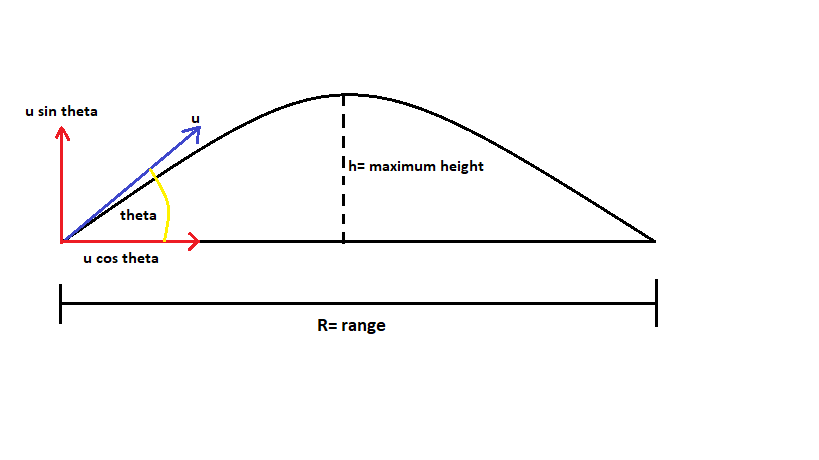
If a particle is thrown at an angle of theta w.r.t horizontal with a velocity u,it follows projectile motion(see the diagram) before landing.
the,upward motion is dure to the vertical component of velocity i.e u sin theta hence it goes upward,until velocity becomes zero due to the downward acceleration due to gravity,and then comes back.
and its horizontal motion is due to the u cos theta component.
Now,suppose it takes time t to reach its highest point, so using v=u-at we get, t=(u sin theta)/g,now it will take the same time for coming down,so total time of flight becomes, T= (2 u sin theta)/g
Now,in this time T if the particle horizontally goes a distance of R (range) ,we can say, R= u cos theta *T (using s=vt , as moving with constant velocity)
Now,putting the value of T we get,
R= (u cos theta)(2u sin theta)/g or,(u^2 sin 2 theta)/g


